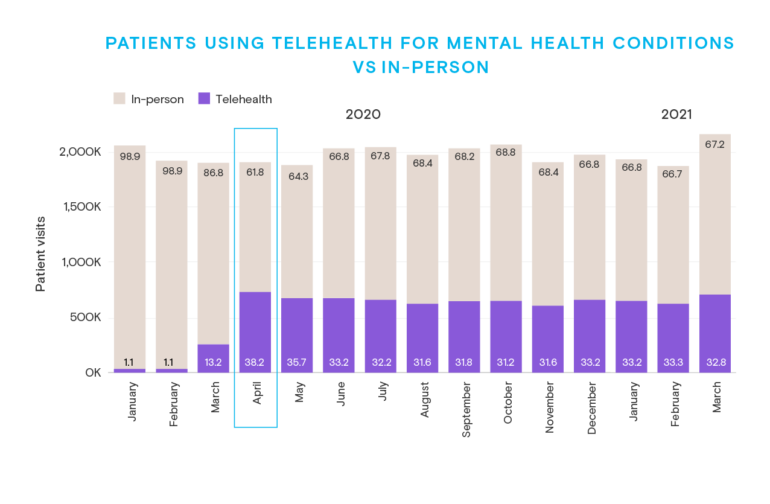The COVID-19 pandemic likely permanently increased the delivery of mental health counseling through telehealth, according to new research from Oregon Health & Science University.
The retrospective analysis was published today in the April issue of the journal Health Affairs.
“Our study suggests that telehealth services for mental health counseling expanded significantly and is likely to stay,” said lead author Jane Zhu, M.D., assistant professor of medicine (general internal medicine and geriatrics) in the OHSU School of Medicine. “Future applications of tele-mental health should really be focused on understanding the population, context and disease conditions most conducive to this method.”
Zhu and co-authors used a nongovernmental claims clearinghouse to analyze data from 2016-18 and compare it with the period of the onset of the pandemic, from March to December 2020, combing through a total of 101.7 million outpatient mental health visits.
They found that in the early period of the pandemic, in-person mental health visits initially fell by 21.9%, despite the onset of a stress-inducing pandemic. Mental health visits promptly rebounded, however, with nearly half of them—47.9%—transitioning to telehealth by the end of the study period in December 2020.
Researchers detected differences in the use of telehealth among clinical conditions. For example, people being seen for schizophrenia were less likely to use in-person visits, whereas those with anxiety and fear-related disorders used telehealth to a greater extent.
The authors also cited additional research revealing that older adults, Black and Hispanic people, people living alone, and those with lower incomes appear to be less likely to access mental health counseling online.
“Telemedicine is often talked about as the next frontier of health care delivery,” Zhu said. “Yet, the evidence in our paper suggests a lack of uptake among some groups who are experiencing barriers to telehealth.”
Patients will continue to make substantial use of telehealth in the years to come, researchers expect.
Telehealth is uniquely suited to mental health services, they write. Even before the pandemic, earlier studies raised the potential for improving access to care for the 119 million Americans who live in areas defined as lacking health professionals. In addition, studies have shown a high satisfaction among patients who don’t necessarily need a detailed in-person physical exam or laboratory testing often required for medical or surgical care.
The authors conclude with a cautionary note:
“Although reducing regulatory and payment barriers may improve access to care, increased reliance on telehealth could exacerbate existing health care disparities or worsen care outcomes for other populations, particularly if access to broadband internet is limited in some regions or unavailable to lower-income or clinically vulnerable populations,” they write. “Future research is needed to understand how telehealth modalities can best improve equitable access to mental health care in the face of increased overall demand.”
In addition to Zhu, co-authors included Renae Myers, M.P.H., John McConnell, Ph.D., and Ximena Levander, M.D., of OHSU; and Sunny C. Lin, Ph.D., now of Washington University in St. Louis.
More information:
Trends in outpatient mental health services use before and during the COVID-19 pandemic, Health Affairs (2022). DOI: 10.1377/hlthaff.2021.01297
Provided by
Oregon Health & Science University
Citation:
Pandemic drives use of telehealth for mental health care (2022, April 4)



